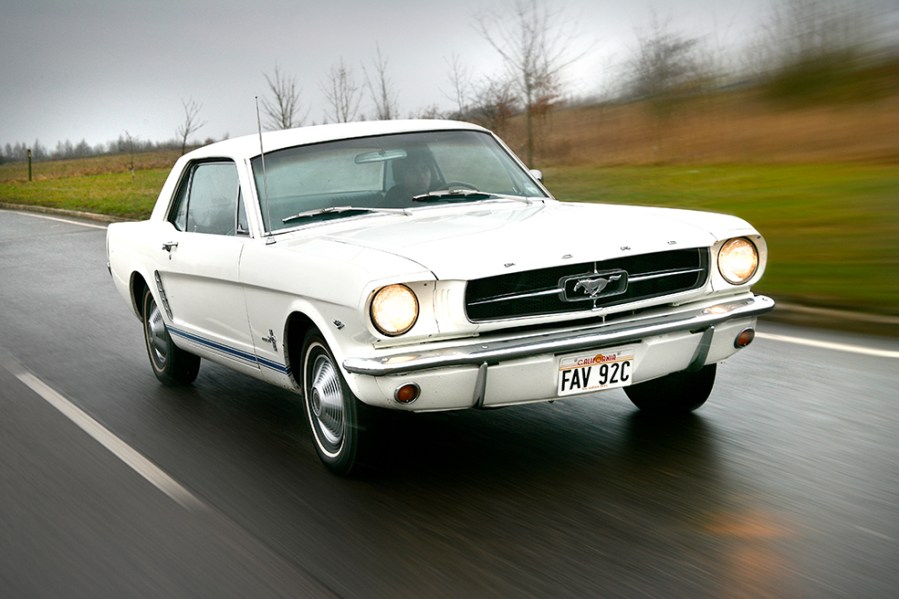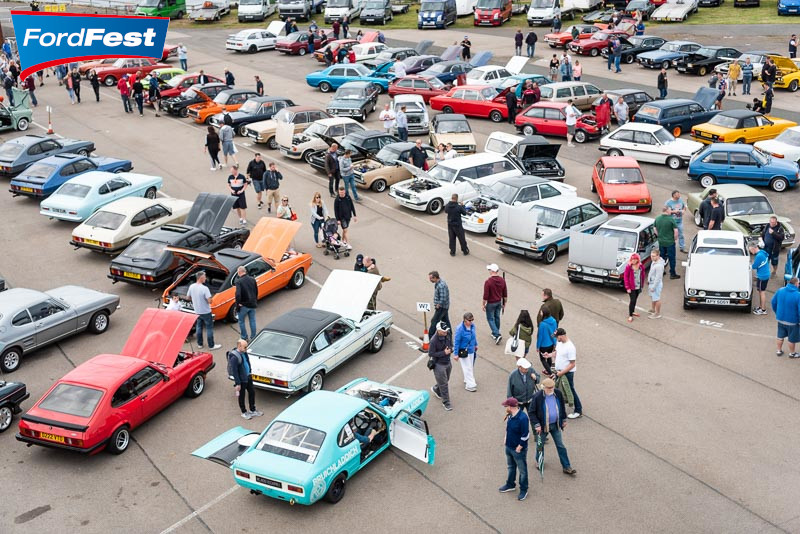Celebrating its 60th anniversary in 2024, the all-American Ford Mustang is a motoring icon. Here’s how to buy a great example
Images: Jackie Skelton
The original Mustang of 1964 was Ford of America’s first ‘pony car’, a model designed from the outset to be compact, stylish and affordable, but with a sporting twist. It was a brave move for any American manufacturer whose home market was dominated by gargantuan saloons, but the Mustang was a hit for Ford from day one
The newcomer was compact enough to also appeal to buyers on this side of the Atlantic, hence its third-place finish in the 1965 European Car of the Year contest. Ford didn’t rest on its corporate laurels, however; the first-generation model underwent numerous upgrades and restyles before being finally replaced by the short-lived Mustang II in 1974.
At its US launch in April 1964, the Ford Mustang was available with a choice of hardtop coupe or convertible body styles, with a fastback being added four months later. Various straight-six and V8 powerplants would be made available, ranging in size from 170cu in (2.8-litre) to a 289cu in (4.7-litre) small-block. For the 1967 model year, the Mustang was treated to a restyle that saw the car grow in length, freeing up space for a big-block V8 of 6.4- or 7.0-litre capacity in its most powerful guises, while the small-block could now be had as a 4.9-litre.
The 1969 model year saw the Mustang growing further, with the Mach 1 package (bringing extra power and sportier add-ons) also offered. A full restyle followed for 1971, adding yet more bodyshell inches as well as a choice of hardtop, SportsRoof or convertible body styles, while the following year’s tightening of emissions regulations saw the Boss 351 edition and 7.0-litre big-block dropped, leaving the 351cu in (5.8-litre) as the biggest engine option. Mild cosmetic changes came for the final 1973 model year, by which time the Pinto-based Mustang II was being readied for launch.
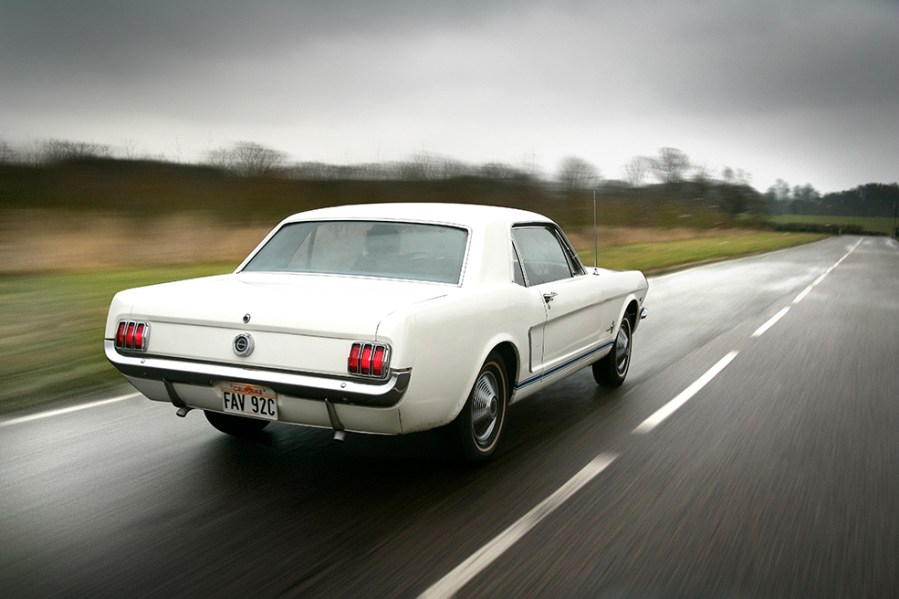
Bodywork
Any Mustang buyer’s biggest concern should be the state of its bodywork, although with most UK-based early Mustangs likely to have been imported in recent years, there are plenty available that haven’t had to endure too many British winters. Find an import from one of the dryer US states and it might just impress with how rust-free it is, although bleached paintwork and a sun-damaged interior aren’t unusual.
Virtually anywhere on a Mustang bodyshell can rot, so you should be vigilant when examining any survivor. The car features box-section front and rear side rails tied into what are known in America as rocker panels, with everything connected via five crossmembers. Full-depth side aprons are welded to the bulkhead/firewall as well as the side rails. The front rails are tied into the rockers and floorpan with torque boxes designed to keep the front end from twisting.
The floorpans and bulkhead are prone to rust, as are the crossmembers and all box sections. The sills can also rust spectacularly, so check carefully for signs of bubbling paintwork, filler or rot-hiding underseal.
Panels that can rust include the front wings (particularly the lower sections), inner wings, the bottom of each door, rear wheelarches, lower rear quarters and boot floor, which can corrode badly.
The good news is that just about everything you’re likely to need is readily available, mostly from US-based specialists like CJ Pony Parts (www.cjponyparts.com). And although you’ll need to factor in the extra cost of taxes and UK shipping, the parts themselves are very reasonably priced. For a 1966 Mustang, for example, new front wings can be bought from as little as $157 each, while a lower section repair panel for a wing is around $45.
For the same car, a complete new door costs just under $340, while a door skin can be had for only $66. And if your 1966 Mustang’s rear wings are rotten, a brand new rear-quarter panel can be bought off the shelf for $166.

Engine and transmission
The least powerful engine on offer from the start was a 170cu in six-cylinder unit, borrowed from the Ford Falcon and pushing out a fairly unexciting 101bhp. This explains why V8 versions of the Mustang were such a popular choice, with the two-barrel 260cu in engine proving a particular hit thanks to its 164bhp output. A four-barrel 289 could also be had, providing 210bhp, while a K-code high performance derivative of the same unit came with a 10.5:1 compression ratio plus other upgrades (aluminium pistons, solid lifters, high-flow cylinder heads, a heavy-duty crank, bigger carb and so on) for an output of 271bhp.
Other engines were offered later, with the Mustang’s first decade bringing a complex range of powerplant options. It’s still the case that the V8s are the most sought after, often attracting a price premium. Special versions like the early K-code cars and later Boss models are among the rarities and are highly prized. If you’re buying a car that’s claimed to be something special, make sure it’s a matching-numbers example and is the ‘real deal’.
Whichever Mustang you choose, you want to ensure it’s in fine fettle. Conducting a compression test will tell a lot about the state of the engine, but this might not be a practical option. If the car is up and running, make sure you take it for a test drive and run it at normal operating temperature as this is more likely to show any oil and fluid leaks; check for any coolant issues, and look for oil leaks in particular from the rear main seal. Listen out for any irregular noises (low-down rumbles and top-end rattles) that suggest general wear and tear, and watch for signs of blue smoke when accelerating under load.
The base gearbox in the Mustang was a three-speed manual with a floor shift, while a four-speed manual was optional, as was the Cruise-O-Matic automatic transmission. Certain high-powered versions came only with a four-speed manual gearbox.
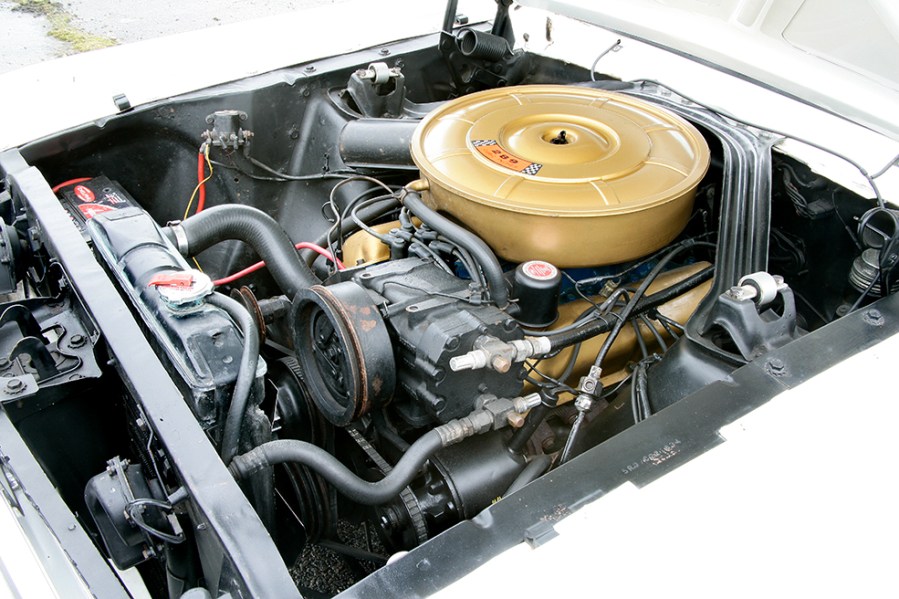
Suspension, steering and brakes
The Mustang featured independent front suspension with coil springs, upper and lower control arms, and an anti-roll bar. The front coil springs and hydraulic tubular shocks are mounted on top of the upper control arms, while strut rods help locate the lower control arms. Reinforced towers in the engine bay serve as mounting points for the upper arms as well as housing the coil springs. Semi-elliptic leaf springs bring up the rear, together with hydraulic shock absorbers.
Drum brakes came as standard, with servo assistance an optional extra. Front disc brakes were also an extra-cost option on V8s from 1965-on.
When inspecting any Mustang, check the front suspension towers as well as the tops of the side aprons for cracks, rust and signs of previous repairs. Carry out the usual checks for worn suspension (does the car feel particularly ‘sloppy’ when cornering, are there any fluid leaks from the dampers, and so on) that might suggest lack of maintenance. And obviously look at the condition of the brake shoes/pads and drums/discs, as well as the brake hoses and pipes.
The steering box set-up is as straightforward and basic as the rest of the Mustang’s mechanicals, so again it’s a simple check. You’ll find there’s a fair amount of play in the steering anyway, but it shouldn’t be excessive and the box itself should be free of leaks.
Whatever you need in order to improve your Mustang’s running gear, it’s readily available – even if that means ordering it from the USA.
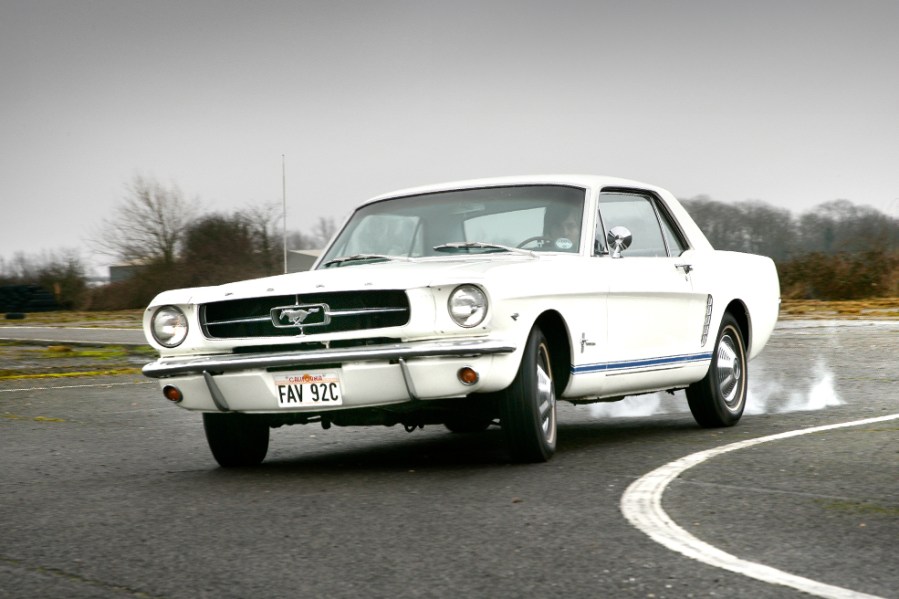
Interior, trim and electrics
Mustangs came as standard with 2+2 seating that included bucket front seats and a centre console, although a front bench seat and fold-down armrest was an inexpensive optional extra. Upholstery choices were vinyl and a combination of fabric and vinyl, while nylon-type deep-pile carpet also featured. An extra-cost Interior Decor Group (typically referred to as the ‘pony interior’) added embossed two-tone vinyl seat trim and wood-look trim on the dash and console, as well as a wood-grain steering wheel and five-gauge instrument cluster – a spec that’s sought after among aficionados.
Whatever the spec of interior fitted to the Mustang you’re inspecting, check for splits in the vinyl and wear in the fabric upholstery. Headlining rips and worn-out carpets aren’t uncommon, and you should ensure that all the dials, switches and electrics are working as intended.
As before, parts availability is incredibly good, and it’s easy to upgrade any car’s spec. Pony-style interiors for early Mustangs are available from CJ Pony Parts, for example, with complete vinyl upholstery kits in a variety of colours available from just over $460, while standard front seat retrim kits can be bought for just under $200. As always, you should factor in the extra cost of duties and shipping when budgeting.
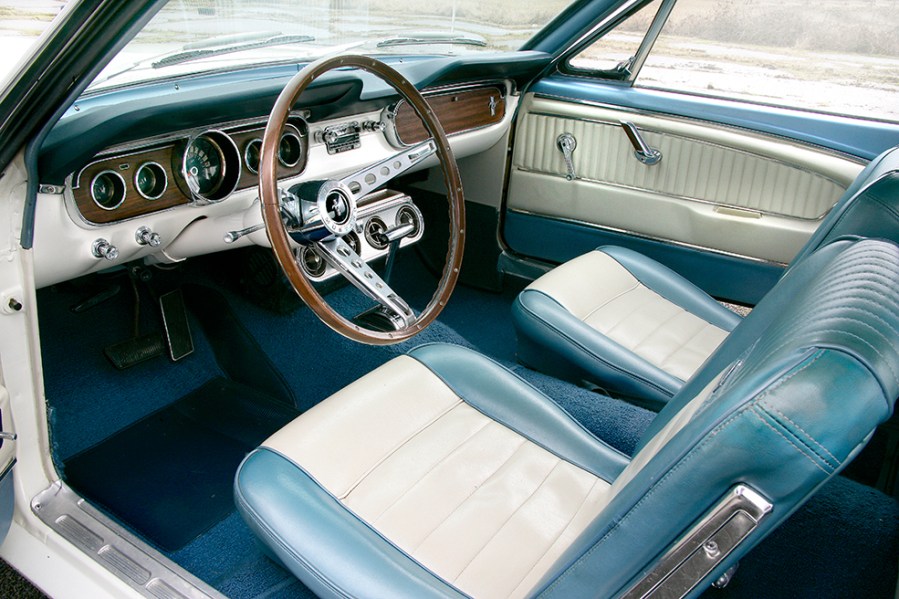
Ford Mustang: our verdict
The Mustang is 60 years old this year and remains as much of an American favourite as ever. Indeed, it’s a model that’s still going strong, although it’s the first-generation range that classic enthusiasts tend to prefer – and it’s easy to see why.
With handsome long-bonnet looks, a wide choice of powerplants and that all-important Mustang image, it’s a sporting coupe (or convertible) with plenty of appeal. And thanks to superb parts availability combined with sensible running costs, it’s as sensible a choice as any of its British or European contemporaries. What’s not to like?
First-gen Mustang prices vary hugely, with particularly early cars in superb condition and any special edition models (or even Shelby-style recreations) achieving serious sums – often in the region of £50,000–75,000 for a UK-sourced example.
But you don’t need pockets that deep if you want to experience Mustang ownership, as £25,000–35,000 will secure you a standard-spec hardtop or fastback in very good to excellent condition – a car that’s presented well, mechanically sorted and ready to enjoy. Six-cylinder cars tends to be the cheapest, while top-spec V8s inevitably carry a premium. Projects, meanwhile, can be picked up from less than £10,000.
Many Mustang buyers prefer to buy their car in the USA and have it shipped over, though you’ll need to discuss with a reliable import specialist the likely costs involved. The cars themselves tend to be cheaper in the States, with regular-spec 1965-67 project cars starting from as little as $7500–9000, and immaculate hardtops topping out at around $35,000. You’ll pay more (up to $50,000) for an absolutely immaculate fastback or convertible, at which level you can expect near-perfection.
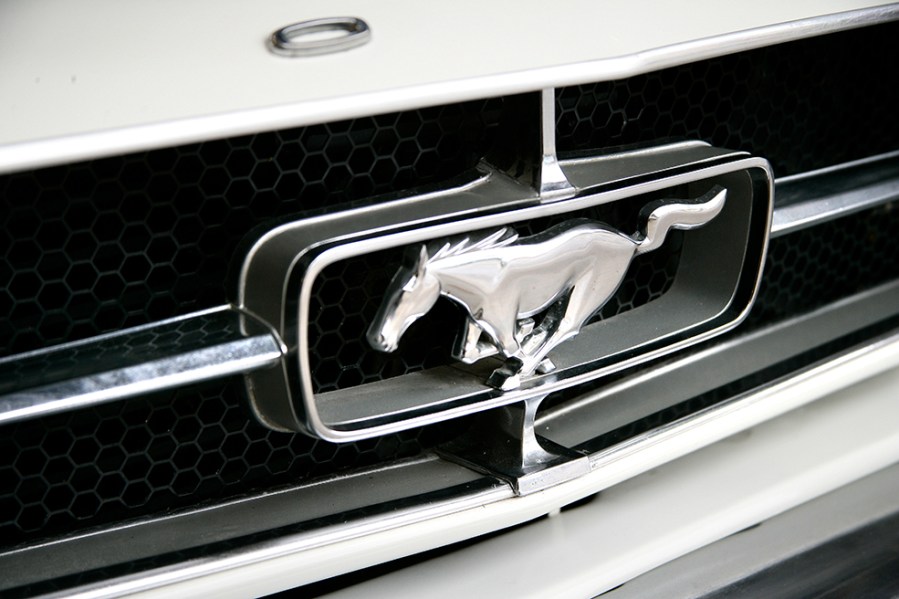
Ford Mustang timeline
1964
Mustang hardtop and convertible launch in April; fastback follows in August
1965
Entry-level 170cu in engine replaced by 200cu in, and new 289cu in (200bhp) V8 arrives
1967
Minor restyle brings longer front end to accommodate bigger (up to 428cu.in) V8
1968
Mustang GT Fastback achieves global fame with Steve McQueen in Bullitt
1969
Even longer new-style front end is added; Mach 1 edition brings extra power and add-ons
1970
New 351cu.in Cleveland V8 debuts, along with minor front-end restyle
1971
New-look Mustang launched, with wider hardtop, convertible and SportsRoof body styles
1972
429 big-block and Boss versions dropped; 351cu in is now biggest engine option
1973
Minor restyling via new bumpers and trim; smaller Mustang II successor readies for launch
Ford Fest 2024
If you love classic Fords of all ages, shapes and sizes, Ford Fest 2024 should be on your calendar.
Held at Mallory Park Circuit in Leicestershire on Sunday, September 22, Ford Fest 2024 is set to bring together all the best Ford cars in the country, with club displays, show-and-shine and live action all on the billing. Themed displays will bring together some of the best examples of the breed, while an extensive autojumble and retail areas will keep bargain hunters happy.
There’s also the option to camp on-site – and you can even take your own car on track with the option of professional instruction.
For full ticket pricing details simply click the button below!

